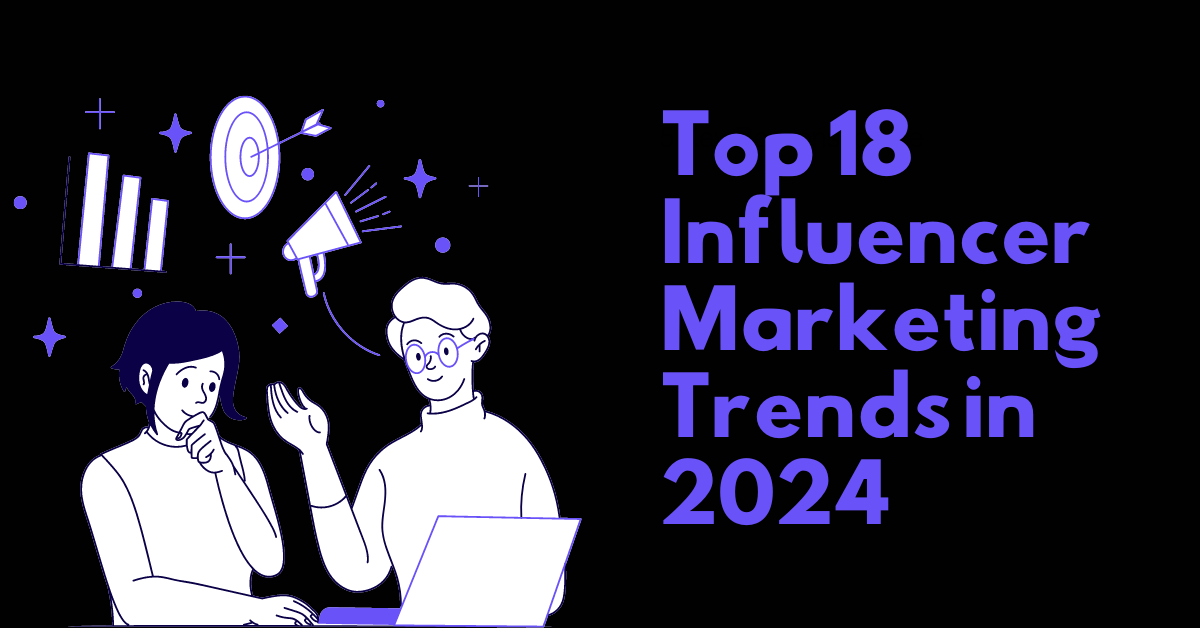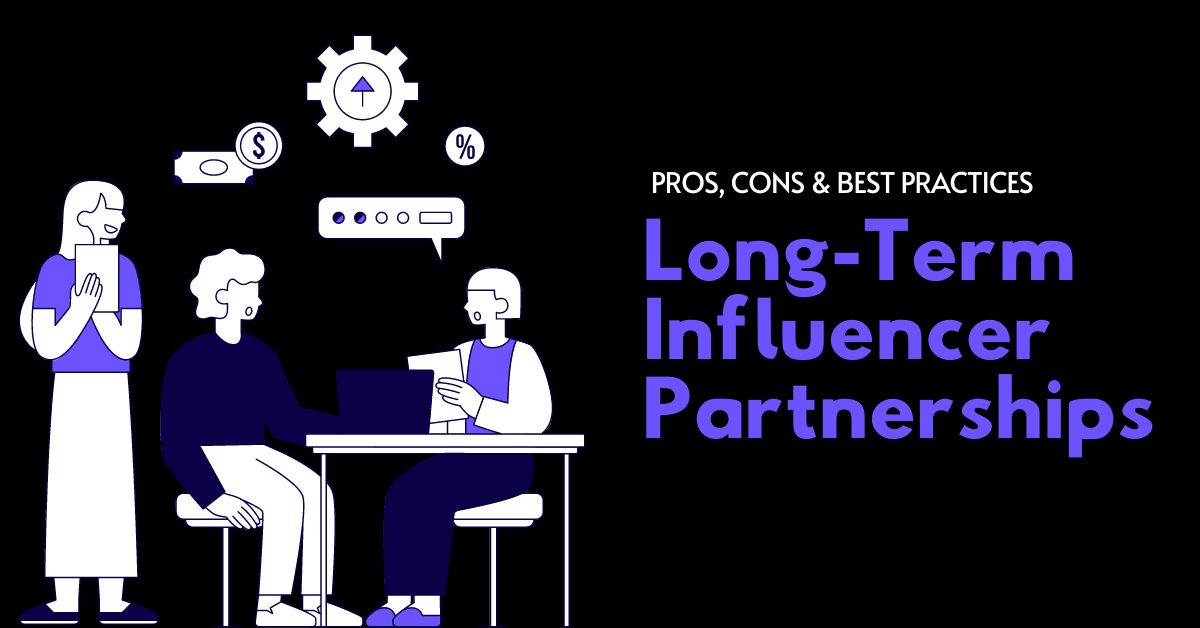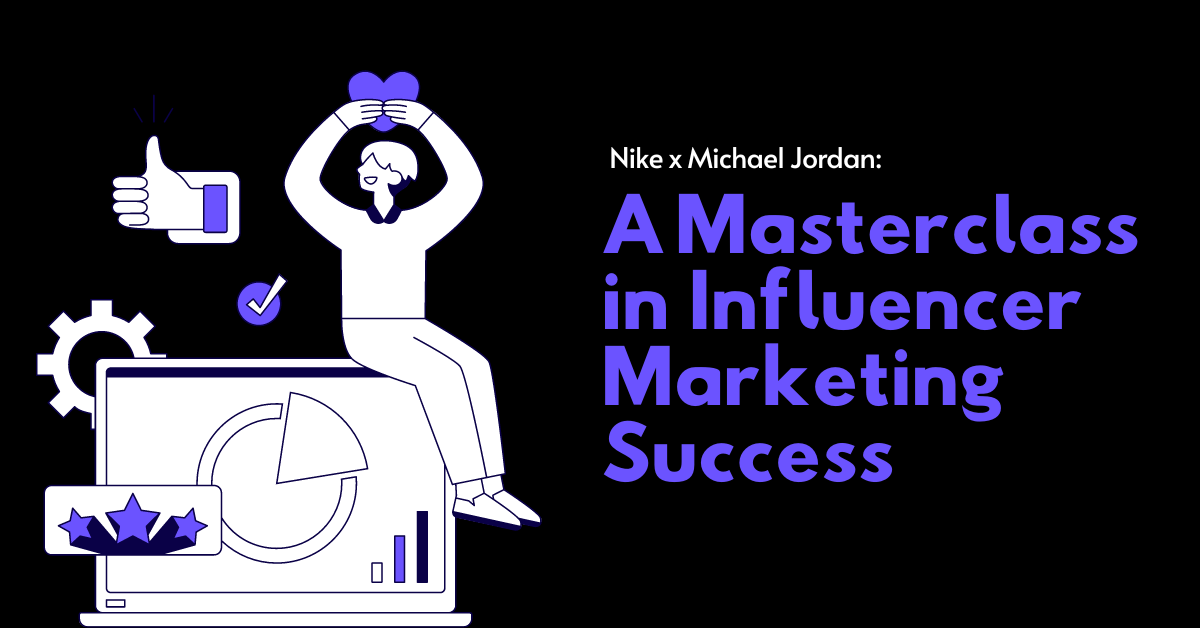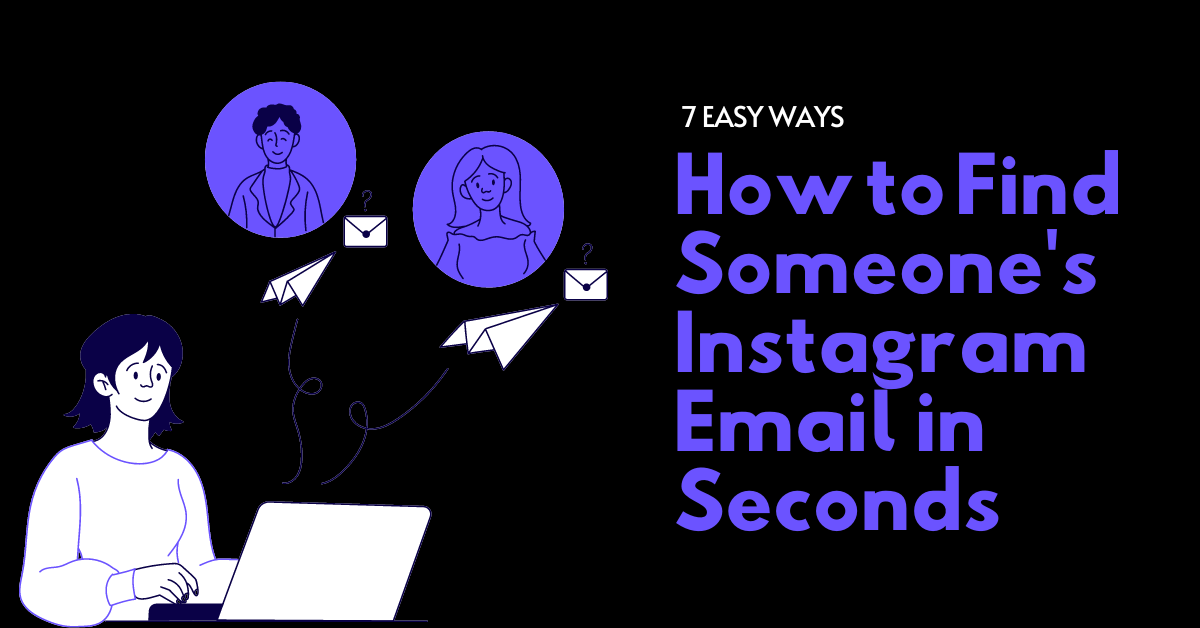Influencer Marketing has grown rapidly, from $1.7 billion in 2016 to $21.1 billion in 2023. It’s a fast-moving industry, so to stay ahead, you need to know what’s trending and what’s not. In this blog post, we’ll explore the 18 biggest Influencer Marketing trends that brands should watch out for. Whether you’re a marketing pro or just getting started with influencers, this guide will give you a competitive advantage in 2024. Let’s get into it!
1. Building Long-Term Influencer Partnerships
One-off sponsored posts are outdated. In 2024, brands prioritize authentic, lasting influencer partnerships to build trust and deeper audience connections over time. Just look at Skechers’ wildly successful long-term ambassadorship with fitness guru Amanda Kloots. Their partnership perfectly blends Skechers’ activewear with Kloots’ workout expertise. This highlights how brands leverage influencers for trust, consistent content, storytelling, and potentially co-created experiences to build brand communities.
Nearly half (49%) of influencers say long-term campaigns are their favorite way to work with brands. It’s a total win-win-win scenario. Brands get to stop searching endlessly for new influencers, build loyalty, and position themselves as trusted partners. Influencers benefit from stable income and get the opportunity to share feedback shaping the brand’s strategy. Meanwhile, audiences enjoy an authentic and reliable brand experience from names they trust.
2. Short-Form Video Content Dominates
Attention spans are shorter than ever, so it’s no surprise that short-form video dominates social media. According to the 2024 HubSpot State of Marketing Report, short videos under 60 seconds are the number one format marketers are using and will see the most growth in 2024.
Brands are going all-in on short video content for platforms like TikTok, Instagram Reels, YouTube Shorts, and Snapchat Spotlight. These quick-hit clips showcase a brand’s personality engagingly, speaking to modern viewers. Fashion retailer ASOS launched the viral #AySauce TikTok challenge with influencers getting fans to “channel their ASOS vibe” in 15-second outfit videos. The result? A mind-blowing 1.2 billion views, nearly 500k user-generated videos, and a 15.79% engagement rate…in just 6 days!
Brands that excel at creating snappy, on-trend, and wildly entertaining short videos will have a huge competitive edge. There’s also massive viral potential with this format if executed properly.
3. AI-Powered Influencer Marketing Platforms
We all know the massive ROI potential of Influencer Marketing, but the behind-the-scenes process of finding the right influencers and managing campaigns can feel pretty overwhelming.
This is where AI-powered Influencer Marketing Platforms like Creable come in, streamlining these processes at scale. Creable offers AI and automation to find relevant influencers, analyze influencer engagement rates, audience profiles, manage campaigns, and automate post tracking and reporting. Brands can filter over 300 million influencers across YouTube, Instagram, and TikTok for precise influencer matches, minimizing workload.
For brands, this AI-powered approach removes guesswork by analyzing performance data and maximizing their Influencer Marketing investment. For influencers, it means working on aligned partnership opportunities.
4. Leveraging Niche Communities for Targeted Reach
Social media platforms are teeming with niche communities, and brands are capitalizing on this by partnering with niche influencers who are authorities within their specific audience. It’s the ultimate way to tap directly into their target audience through a credible, relatable voice. From skincare enthusiasts to sustainability advocates to home chefs, the possibilities for niche marketing are endless.
For example, Blue Diamond Almonds, targeting health-conscious consumers, partnered with Dietitianleah, a registered dietitian offering nutrition coaching on TikTok. As an authentic voice, Leah promoted Blue Diamond as a healthy snack option. For brands, these niche influencers offer incredible targeted reach and built-in trust. For influencers, it allows them to reinforce their domain authority and work with complementary brands.
5. Authenticity is Key: IGC, UGC, and EGC
As consumers grow skeptical of traditional advertising, authenticity, and transparency will be non-negotiable in 2024. A staggering 63% of consumers trust influencer messages more than brand messages. This shift in trust is driving brands to leverage influencer-generated content (IGC), user-generated content (UGC), and employee-generated content (EGC) in their marketing strategies. These content types inherently feel more genuine and relatable compared to traditional ads, creating a sense of organic brand connection.
The key here is ingenuity and honesty – sharing raw experiences, personal stories, real feedback, and behind-the-scenes looks rather than overt product pushing. Take the example of Patagonia empowering its employees to share their love for the outdoors and sustainable practices on social media. This helps Patagonia reinforce its purpose-driven identity authentically.
For influencers, IGC allows them to create content that aligns with their own brand voice, resonating better with followers and building deeper connections. For users, UGC empowers them to share their own experiences with a brand and feel like part of a community. Lastly, for brands, the more authentic endorsement, the more credibility and trust they build with their ideal customers. This results in higher engagement, brand loyalty, and ultimately, sales.
6. The Rise of Nano and Micro Influencers
While celebrities and mega influencers still have sway, brands are shifting attention and budget toward the rapidly rising micro influencers (10K-100K followers) and nano influencers (1K-10K followers) to reach targeted niche audiences in 2024. These micro influencers have a 60% higher engagement rate than macro influencers. They build trust by starting conversations, responding to comments, and building authentic relationships with their audiences. Brands are drawn to their relatability with their close-knit communities that trust their recommendations.
61% of consumers say influencers with relatable personalities are the most appealing. According to HubSpot, 80% of brands work with smaller influencers to build trust through genuine interactions, unlike macro-influencers whose endorsements can feel impersonal and sponsored. For brands working with tight budgets, micro influencers offer a smart, cost-efficient way to tap into their niche expertise and engaged followings.
7. Influencer Product Lines and Collections
Influencer Marketing is evolving into co-creation! Brands are partnering with influencers to design and launch entire product collections. This collaboration offers influencers a cut of the profits, an opportunity previously reserved for A-list celebrities. This influencer-driven approach creates buzz and allows influencers to exercise their creative vision as true partners.
Take the example of the makeup brand ColourPop. It has partnered with numerous beauty YouTubers and social media influencers to develop limited-edition makeup collections designed by the influencers themselves. These collections generate massive buzz and quickly sell out. For instance, their collaboration with influencer Safiya Nygaard on a lipstick collection was a massive success. This approach allows ColourPop to tap into the creativity and audience reach of influencers while offering customers unique and highly sought-after products.
8. Tuning In To Influencer Podcasts
The podcasting landscape is booming, with over 120 million U.S. adults tuning in monthly. Influencers are leveraging this trend to cultivate dedicated audiences on platforms like Spotify and Apple Music. This presents an opportunity for brands to expand their Influencer Marketing reach beyond social media into the engaging world of podcasts.
This allows brands to tap into a highly engaged listener base through authentic endorsements and in-depth conversations hosted by trusted influencer podcasters. For influencers, podcasts offer a chance to delve deeper into niche topics, connect with their audience on a more personal level, and diversify their revenue streams. This win-win scenario is expected to become a major force in Influencer Marketing.
9. Virtual Influencers Enter the Game
While human influencers still dominate, a new generation of creators is emerging – virtual influencers. These computer-generated personas, like Lil Miquela, a virtual model and musician with 3.5 million followers, are shaking up the Influencer Marketing scene. She was named one of Time Magazine’s 25 Most Influential People on the Internet and even posed with celebrities like Bella Hadid and Millie Bobby Brown. Brands like Givenchy, Calvin Klein, Chanel, Prada, and Dior have all partnered with her.
In 2023, the average ROI for virtual influencer campaigns was 13.7%. For brands, virtual influencers offer complete control over their character’s narrative and image. Brands benefit from owning the IP and crafting the messaging perfectly, ensuring these digital ambassadors resonate with their target audience. With platforms like TikTok incorporating AI-labeling features, virtual influencers are soon to become common in the Influencer Marketing arena.
10. Social Commerce & Live Shopping Go Mainstream
Social media is no longer just a browsing hub, it’s a booming marketplace! Global sales generated through social media platforms were estimated at $992 billion in 2022. Forecasts suggest the value of social commerce sales will reach around $8.5 trillion by 2030.
Live shopping, where influencers showcase products in real-time videos, is exploding on platforms like Instagram and TikTok. This dynamic and interactive shopping format lets viewers buy instantly, making influencer endorsements even more impactful. Influencers are becoming shopping stars through live events, product tagging, and shoppable posts.
Take the viral case of a live streamer on Douyin (TikTok’s Chinese equivalent) who gained fame for quickly presenting each product for only three seconds before showcasing the next. This lightning-fast strategy led to a whopping $13.7 million in sales within just a week! This win-win allows influencers to earn commissions while offering seamless shopping experiences. Brands benefit by transforming influencers into powerful, cost-effective digital storefronts.
Social media platforms are also evolving – Instagram’s “Live Shopping” and TikTok Shop allow direct purchases during livestreams. With social media becoming the new search engine, 51% of Gen Z use it over Google to search for brands.
11. Interactive Content for Engagement
Consumers today crave immersive, two-way experiences that allow them to actively participate, not just consume static content. In 2024, brands are collaborating with influencers to create highly interactive content like Instagram Live Q&As where fans can ask questions in real-time, or addictive Instagram polls and quizzes that track audience opinions and preferences. It’s all about transforming viewers from content consumers into invested participants.
Brands like Fenty Beauty have embraced interactive filters to address consumer pain points, like choosing the right foundation shade. Their virtual try-on filter allows users to experiment with different shades before purchasing, eliminating the frustration often associated with online makeup shopping. No wonder the filter got over 47,000 user videos of virtual makeovers!
These interactive tactics enhance the audience experience and provide valuable data collection opportunities for influencers and brands. By fostering active participation, brands can gain deeper insights into consumer preferences, and influencers can refine their content for better resonance.
12. The Power of Cross-Channel Campaigns
In today’s hyper-connected world, influencers know they can’t just focus on one platform. The smart players are leveraging the unique strengths of various platforms like Instagram, TikTok, YouTube, and even podcasts to maximize reach and revenue streams. Brands are also embracing this omnichannel approach, creating Influencer Marketing campaigns that resonate with wider audiences across the digital landscape.
This cross-channel approach creates a fully immersive branded experience for consumers, allowing them to connect with the brand on multiple platforms and through different content formats. After all, research shows that consumers who see a brand’s message across multiple channels are more likely to engage and convert.
13. Repurposing Influencer Content for Maximum Impact
In 2024, influencer content is no longer single use. In fact, 21% of marketers repurpose IGC across their own marketing channels, stretching the value of their investment.
Think about it – brands work hard to secure those influencer partnerships and pieces of content. Why not capitalize on that effort by strategically placing those authentic snippets across website pages, social ads, promotional videos, and podcast episodes? It increases the visibility of that influencer-backed content to targeted audiences outside of just the influencer’s following. The iconic action camera company GoPro is an expert at this, routinely featuring influencer footage in ads and product pages to inspire customers to document their own journeys.
For influencers, it means extra exposure and more brand mentions to increase their clout. For brands, it exponentially stretches the reach and ROI of their Influencer Marketing campaigns once they have the right content repurposing strategy.
14. LinkedIn: A B2B Influencer Hub
When you think of Influencer Marketing, platforms like Instagram, TikTok, and YouTube likely come to mind first. But don’t overlook LinkedIn’s potential for B2B brands!
LinkedIn is experiencing record levels of engagement and user activity as thought leaders and industry personalities actively promote products and services in the professional space. Industry leaders like Intel and Hootsuite recognize this potential and actively cultivate relationships with authoritative LinkedIn influencers who can sway key decision makers within corporations and industries. Peer influence on LinkedIn simply cannot be underestimated.
For B2B companies, a strategic LinkedIn influencer program represents an underutilized yet highly effective channel for precision marketing aimed at their exact buyer personas. It’s an avenue to amplify credibility, solidify thought leadership, and ultimately drive significant business growth.
15. Diversifying Revenue with Influencer Subscriptions
Influencers are exploring innovative ways to set their content apart and diversify their income streams. One buzzworthy avenue is launching premium subscription-based channels and membership programs.
Through paid memberships on platforms like Patreon, influencers can offer their superfans and supporters exclusive access to valuable premium content like in-depth tutorials, behind-the-scenes clips, and private community forums for a monthly fee.
Not only does this model open up a brand new revenue stream beyond ad dollars and sponsorships, but it also helps influencers retain their audience and monetize that dedicated base over time.
16. Performance-Based Influencer Affiliate Marketing
The lines are blurring between Influencer Marketing and Affiliate Marketing, with over 80% of brands leveraging Affiliate Marketing to generate leads and sales.
The future lies in performance-based partnerships. Brands are moving away from flat fees for influencers, instead offering commission structures based on sales generated through affiliate links.
For brands, this pay-for-performance approach means their influencer investment directly correlates to the revenue generated. They can accurately track and optimize based on what delivers real, measurable results.
For influencers, it provides a powerful incentive to create click-worthy, conversion-driving content that aligns their own success with the brand’s performance.
17. Influencers Turned Entrepreneurs
Many successful influencers are leveraging their fame and audience to launch their own product lines, apps, and even full-fledged brands. Why? It’s all about establishing full creative control and ownership over their influence rather than just renting it out to brands.
Take the example of MrBeast, the hugely popular YouTube entertainer known for expensive stunts and giveaways. He capitalized on his fame by launching the insanely successful MrBeast Burgers restaurant. Thanks to his relentless self-promotion, over 10,000 people waited in line when it opened, setting records for the most burgers sold in a day by a single store!
18. The Shift of Advertising Budget Towards Influencer Marketing
The avenues for the highest ROI all lead to Influencer Marketing as a critical spend in 2024 and beyond. Companies are strategically reallocating their bloated old-school ad budgets.
Influencer Marketing has an 11x higher return on investment (ROI) compared to traditional marketing strategies. It’s simple – today’s consumers distrust interruptive ads more than ever but overwhelmingly trust authentic influencer voices and are more likely to make purchases based on their recommendations. Impact.com found that 64% of consumers report making repeat purchases based on influencer recommendations. As a result, 63% of brands plan to allocate more budget to Influencer Marketing in 2024 as it drives tangible business impact.
From the rise of AI-powered influencer platforms to the explosive growth of social commerce, Influencer Marketing presents numerous opportunities for brands to seize in 2024 and beyond. To capitalize on these trends, brands must prioritize building genuine partnerships that empower influencers to engage with audiences in their unique style and create brand affinity. By staying informed about emerging technologies, platforms, and audience behaviors, marketers can create innovative influencer campaigns that engage consumers with their brand across the digital landscape.



